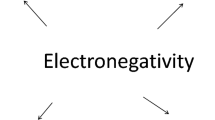Abstract
For nearly three thousand years coined weights of metal have been used as money and for just as long, gold, silver and copper have been the preferred metals for minting coins. Currencies consisting of coins whose value is expressed by the weight of the metal contained in them at market prices, however, have seldom been used.
Access this chapter
Tax calculation will be finalised at checkout
Purchases are for personal use only
Preview
Unable to display preview. Download preview PDF.
Similar content being viewed by others
Bibliography
Ashton, T.S. and Sayers, R.S. 1953. Papers in English Monetary History. Oxford: Clarendon Press.
Bagehot, W. 1873. Lombard Street. Reprint of the 1915 edn, New York: Arno Press, 1969.
Bloomfield, A.I. 1959. Monetary Policy under the International Gold Standard. New York: Federal Reserve Bank of New York.
Bordo, M. and Schwartz, A.J. (eds) 1984. A Retrospective of the Classical Gold Standard 1821–1931. Chicago: University of Chicago Press.
Clapham, J.H. 1944. A History of the Bank of England. 2 vols, Cambridge: Cambridge University Press.
Cottrell, P.L. 1980. Industrial Finance 1830–1914. London: Methuen.
De Cecco, M. 1984. The International Gold Standard: Money and Empire. 2nd edn, London: Frances Pinter.
Fanno, M. 1912. Le banche e il mercato monetario. Roma: Loescher.
Feaveryear, A. 1963. The Pound Sterling. 2nd edn, Oxford: Clarendon Press.
Fetter, F.W. 1965. Development of British Monetary Orthodoxy 1717–1875. Cambridge, Mass.: Harvard University Press.
Ford, A.G. 1962. The Gold Standard 1880–1914: Britain and Argentina. Oxford: Clarendon Press.
Goodhart, C.A.E. 1972. The Business of Banking 1891–1914. London: Weidenfeld & Nicholson.
Hilton, B. 1977. Cash, Corn and Commerce: the Economic Policies of the Tory Governments 1815–1830. Oxford: Oxford University Press.
Ingham, G. 1984. Capitalism Divided? The City and Industry in British Social Development. London: Macmillan.
Keynes, J.M. 1913. Indian Currency and Finance. In Vol. 1 of The Collected Writings of J.M. Keynes, London: Macmillan, 1971.
Lindert, P.H. 1969. Key Currencies and Gold 1890–1913. Princeton Studies in International Finance, No. 24, Princeton: Princeton University Press.
Marshall, A. 1923. Money, Credit and Commerce. London: Macmillan.
McCloskey, D. N. and Zecher, J.R. 1976. How the Gold Standard worked. In The Monetary Approach to Balance of Payments Theory, ed. J. Frenkel and H.G. Johnson, Toronto: University of Toronto Press.
Mommsen, T. 1865. Histoire de la monnaie romaine. Paris: Rollin et Feuardent.
Morgan, E.V. 1965. The Theory and Practice of Central Banking 1797–1913. London: Frank Cass.
Nogaro, B. 1908. L’expérience bimétalliste du XIXe siècle. Revue d’ Economie Politique 22(10), October, 641–721.
Report from the Select Committee on the High Price of Bullion1810. New York: Arno Press, 1978.
Ricardo, D. 1811. The High Price of Bullion: A Proof of the Depreciation of Bank Notes. In The Works and Correspondence of David Ricardo, ed. P. Sraffa, Vol. 3, Cambridge: Cambridge University Press, 1951.
Sayers, R.S. 1936. Bank of England Operations 1890–1914. London: P.S. King & Son.
Supino, C. 1910. Il mercato monetario internazionale. Milano: Hoepli.
Thornton, H. 1802. An Inquiry into the Nature and Effects of the Paper Credit of Great Britain. New York: Augustus Kelley, 1978.
Triffin, R. 1964. The Evolution of the International Monetary System. Princeton Essays in International Finance No. 12, Princeton: Princeton University Press.
Williams, D. 1968. The evolution of the sterling system. In Essays in Honour of R.S. Sayers, ed. C.R. Wittlesley and J.S.G. Wilson, Oxford: Clarendon Press.
Editor information
Copyright information
© 1991 Palgrave Macmillan, a division of Macmillan Publishers Limited
About this chapter
Cite this chapter
De Cecco, M. (1991). Gold Standard. In: Eatwell, J., Milgate, M., Newman, P. (eds) The World of Economics. The New Palgrave. Palgrave Macmillan, London. https://doi.org/10.1007/978-1-349-21315-3_40
Download citation
DOI: https://doi.org/10.1007/978-1-349-21315-3_40
Publisher Name: Palgrave Macmillan, London
Print ISBN: 978-0-333-55177-6
Online ISBN: 978-1-349-21315-3
eBook Packages: Palgrave Economics & Finance CollectionEconomics and Finance (R0)




